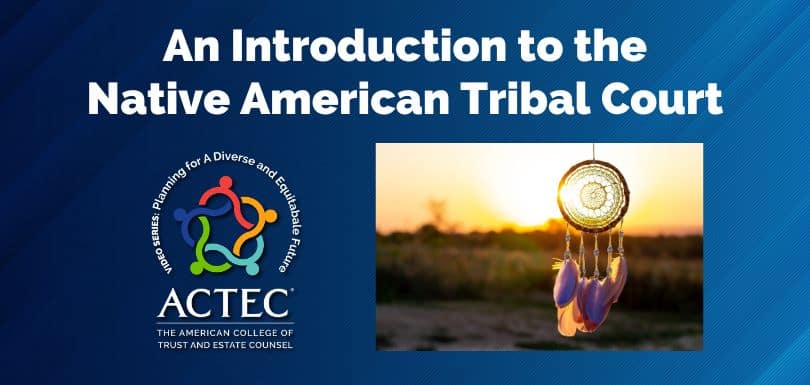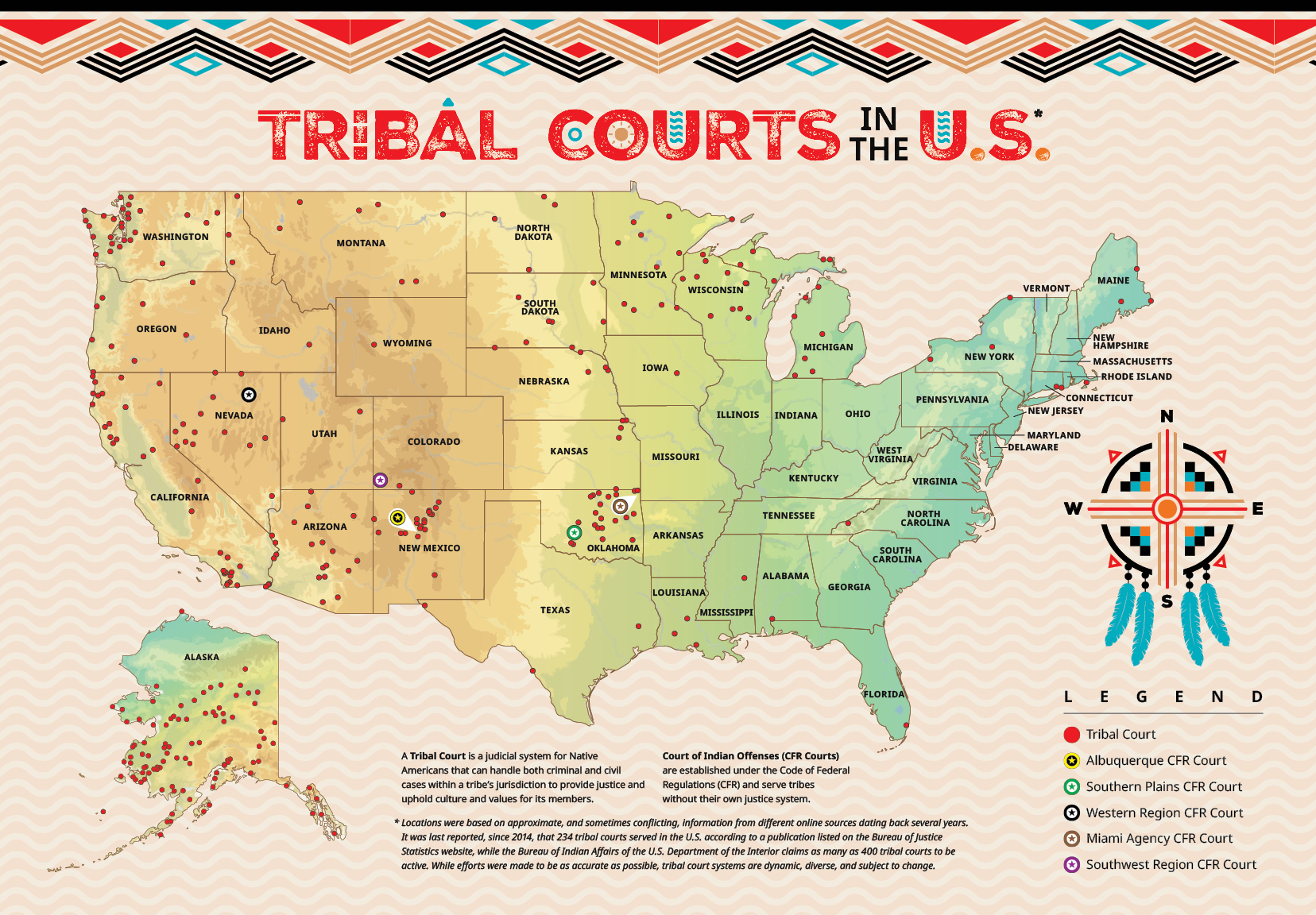
Guardians of Sovereignty: Native American Tribal Courts Navigating Jurisdiction, Traditional Justice, and Modernity
At the heart of Native American sovereignty lies a complex and often misunderstood pillar: the tribal court system. Far from being mere relics of the past, these courts are vibrant, evolving institutions that serve as critical arbiters of justice, protectors of cultural identity, and essential governmental functions for over 400 federally recognized tribes across the United States. They embody the enduring resilience of Indigenous nations, blending ancient traditions of justice with modern legal frameworks to address the unique challenges faced by their communities.
This article delves into the intricate world of Native American tribal courts, exploring the historical evolution and current complexities of their jurisdiction, the profound impact of traditional justice principles, and their dynamic adaptation to modern applications and societal needs.
A Legacy of Sovereignty: The Historical Context
Before European contact, Indigenous nations maintained sophisticated and diverse systems of justice, rooted in their respective cultural values, spiritual beliefs, and community structures. These systems prioritized reconciliation, restitution, and the restoration of harmony within the community, rather than solely punishment. Elders, spiritual leaders, and community councils often played central roles in resolving disputes and addressing transgressions.
The arrival of European colonizers and the subsequent formation of the United States dramatically altered this landscape. Through treaties, legislation, and policies aimed at assimilation and dispossession, tribal sovereignty was systematically eroded. The Major Crimes Act of 1885 was a pivotal moment, unilaterally asserting federal jurisdiction over major crimes (such as murder, rape, and arson) committed by Native Americans on tribal lands, effectively stripping tribes of their inherent authority to prosecute these offenses. This act was a direct response to an 1883 Supreme Court ruling ( Ex parte Crow Dog ) that affirmed tribal jurisdiction, illustrating the federal government’s rapid shift towards asserting control.

The mid-20th century brought further legislative intrusions, most notably Public Law 280 (1953), which transferred criminal and some civil jurisdiction over tribal lands to six states (Alaska, California, Minnesota, Nebraska, Oregon, Wisconsin) and allowed other states to opt in. This patchwork of jurisdiction created immense confusion and often led to a decline in law enforcement and judicial services on affected reservations, as states frequently lacked the resources or understanding to effectively administer justice in these unique cultural contexts.
However, the era of self-determination, beginning in the 1960s and 70s, marked a significant turning point. Federal policy shifted away from termination and assimilation, recognizing the importance of tribal self-governance. This resurgence empowered tribes to rebuild and strengthen their court systems, asserting their inherent governmental powers to create and enforce laws, and administer justice within their territories.
The Complex Web of Jurisdiction
The jurisdiction of tribal courts is perhaps the most complex and frequently misunderstood aspect of their operation. It is not uniform across all tribes and is subject to a unique interplay of tribal, federal, and sometimes state law.
At its core, tribal jurisdiction is based on the inherent sovereignty of Native American nations, which predates the United States. This means tribes possess the authority to govern their people and territories unless that authority has been explicitly limited by Congress.
However, federal law has imposed significant limitations:
-
Criminal Jurisdiction over Non-Indians: The landmark Supreme Court case Oliphant v. Suquamish Indian Tribe (1978) held that tribal courts generally lack criminal jurisdiction over non-Indians who commit crimes on tribal lands. This ruling created a dangerous jurisdictional gap, as federal authorities often decline to prosecute minor offenses, leaving tribes unable to protect their communities from crimes committed by non-members. This "jurisdictional void" has contributed to high rates of violence on reservations, particularly against Indigenous women.

-
Major Crimes Act: As mentioned, this act continues to grant federal courts jurisdiction over specific serious crimes committed by Native Americans in Indian Country.
-
Public Law 280: In PL-280 states, the state has assumed primary criminal jurisdiction over most crimes in Indian Country, further limiting tribal court authority.
Despite these limitations, tribal courts exercise robust jurisdiction over:
- Crimes committed by tribal members within Indian Country.
- Civil matters involving tribal members, regardless of where they occur (e.g., divorce, child custody, inheritance).
- Civil matters involving non-Indians on tribal lands, such as contract disputes, torts, or regulatory violations.
- Exclusion of non-members from tribal lands for just cause.
A significant modern development has been the restoration of limited criminal jurisdiction over non-Indians through amendments to the Violence Against Women Act (VAWA) in 2013 and 2022. The 2013 reauthorization allowed tribal courts to prosecute non-Indian perpetrators of domestic violence, dating violence, and violations of protection orders when the victim is an Indian and the crime occurs on tribal land. The 2022 reauthorization expanded this "special tribal criminal jurisdiction" to include crimes of sexual assault, stalking, child abuse, and trafficking. This expansion represents a crucial step towards closing the Oliphant gap and empowering tribes to protect their most vulnerable members. It is a powerful testament to tribal advocacy and federal recognition of the need for effective justice on reservations.
Traditional Justice: A Holistic Approach
While tribal courts operate within modern legal frameworks, many are deeply informed by and actively integrate traditional justice principles. Unlike the adversarial, punitive model prevalent in Western legal systems, traditional Indigenous justice often emphasizes:
- Restoration and Healing: The primary goal is to heal the harm caused by the offense, not just punish the offender. This involves restoring balance to the community, supporting victims, and rehabilitating offenders.
- Community Involvement: Justice is a community responsibility. Elders, family members, and community leaders often play active roles in resolving disputes and determining appropriate responses.
- Reconciliation: Efforts are made to reconcile the victim and offender, and to reintegrate the offender back into the community as a productive member.
- Holistic Well-being: Justice considers the physical, mental, emotional, and spiritual well-being of all parties involved.
- Peacemaking and Talking Circles: These traditional methods are widely employed. Instead of a judge and jury, a facilitator guides participants in a circle to share perspectives, express harm, and collectively determine a path forward. This fosters empathy and shared responsibility.
- Sentencing: Sentences may include community service, restitution, counseling, cultural education, or even banishment (in extreme cases) – all tailored to the individual and the specific harm caused, with an emphasis on personal accountability and cultural relevance.
The integration of traditional justice methods has demonstrably positive outcomes, including lower recidivism rates for many offenses and stronger community bonds. It represents a powerful alternative to mainstream justice, offering a model that prioritizes healing over retribution.
Modern Applications: Adapting to Contemporary Challenges
Today’s tribal courts are sophisticated institutions, continually adapting to meet contemporary needs while honoring their heritage.
-
Professionalization: Many tribal courts employ law-trained judges, prosecutors, and public defenders. They have developed comprehensive codes of law, rules of procedure, and appellate systems, often forming inter-tribal appellate courts to ensure consistency and due process. The National American Indian Court Judges Association (NAICJA) plays a vital role in professional development and advocacy.
-
Specialty Courts: Like their state and federal counterparts, tribal courts have established specialty courts to address specific issues:
- Drug/Wellness Courts: Focus on rehabilitation for substance abuse offenders, integrating traditional healing practices.
- Family Courts: Prioritize the well-being of children and families, often working closely with the Indian Child Welfare Act (ICWA) to keep Native children within their tribal communities.
- Healing to Wellness Courts: A holistic approach combining legal, social, and health services.
-
Addressing Modern Crimes: Tribal courts increasingly grapple with complex issues such as human trafficking, environmental crimes (e.g., protecting sacred lands and water rights), and complex financial fraud, developing expertise and partnerships to effectively prosecute these cases.
-
Technological Integration: Many tribal courts leverage technology for case management, remote hearings, and legal research, improving efficiency and accessibility, particularly in remote areas.
-
Intergovernmental Cooperation: Tribal courts frequently engage in collaborative efforts with federal and state courts, law enforcement agencies, and social services to ensure comprehensive justice delivery and address jurisdictional challenges. This can involve cross-deputization agreements for law enforcement or information-sharing protocols.
Challenges and the Path Forward
Despite their vital role and evolution, tribal courts face persistent challenges:
-
Chronic Underfunding: Tribal justice systems are severely underfunded compared to state and federal courts, impacting resources for judges, staff, infrastructure, and legal aid. This lack of resources hampers their ability to provide comprehensive services and uphold justice effectively.
-
Jurisdictional Gaps: The lingering effects of Oliphant and Public Law 280 continue to create jurisdictional voids, particularly concerning crimes committed by non-Indians where VAWA’s expanded jurisdiction does not apply. This leaves communities vulnerable and perpetrators unpunished.
-
Public Awareness: A general lack of understanding among the broader American public, and even within some legal communities, regarding tribal sovereignty and the legitimacy of tribal courts, perpetuates misconceptions and hinders advocacy for full recognition and support.
-
Recruitment and Retention: Attracting and retaining qualified legal professionals, especially those with cultural competency, can be difficult in remote tribal communities.
The path forward requires sustained federal investment, further legislative action to fully restore inherent tribal criminal jurisdiction, and increased intergovernmental cooperation based on respect for tribal sovereignty. Education and advocacy are crucial to foster a greater understanding of the vital role tribal courts play in upholding justice, preserving culture, and strengthening Indigenous nations.
Conclusion
Native American tribal courts stand as powerful symbols of enduring sovereignty and self-determination. They are not merely judicial bodies but living expressions of Indigenous nationhood, blending ancient wisdom with modern legal principles to serve their communities. From navigating complex jurisdictional landscapes to implementing innovative traditional justice practices and adapting to contemporary challenges, these courts demonstrate remarkable resilience and adaptability.
As these institutions continue to evolve, their contributions to the American legal landscape – offering unique models of restorative justice, emphasizing community healing, and safeguarding cultural identity – become ever more apparent. Supporting and strengthening tribal courts is not just about upholding justice for Native Americans; it is about honoring the inherent sovereignty of Indigenous nations and enriching the fabric of justice for all.